Table of Contents
ToggleIntroduction
Are you tired of sending out resumes and never hearing back? Do you feel like your skills are being overlooked? It’s time to let your work speak for itself. A strong portfolio can be your ticket to landing those dream jobs you’ve always wanted. But how do you create one that truly stands out?
Imagine walking into your dream company’s office, confident that your portfolio will blow them away. Picture yourself receiving multiple job offers, all because your portfolio showcased your skills in a way that no resume ever could. This isn’t just a dream – it can be your reality.
In this guide, we’ll reveal the 10 secrets to build a strong portfolio that will transform your average portfolio into extraordinary. These aren’t just tips – they’re proven strategies used by successful professionals across industries. Whether you’re a designer, writer, developer, or any other creative professional, these secrets will help you craft a strong portfolio that not only catches an employer’s eye but also keeps them hooked.
But before we dive in, let’s address the elephant in the room: Why does a portfolio matter so much?
How a great portfolio can set you apart from other job seekers
In a sea of job applications, a well-crafted portfolio can be your lighthouse, guiding employers directly to you. Here’s how it sets you apart:
- Visual Impact: While resumes are text-heavy, portfolios provide a visual representation of your skills, making a stronger and more memorable impression.
- Proof of Skills: Instead of just claiming you have certain skills, a portfolio allows you to prove them with concrete examples.
- Storytelling: A portfolio lets you tell the story of your professional journey, showcasing not just what you’ve done, but how you approach challenges and solve problems.
- Personality: Unlike a standardized resume, a portfolio allows your unique personality and style to shine through, helping employers envision how you’d fit into their team.
As we delve into the secrets of crafting a job-landing portfolio, remember that your portfolio is more than just a collection of work – it’s a powerful marketing tool for your brand. In the next section, we’ll explore the first crucial secret: knowing your audience.
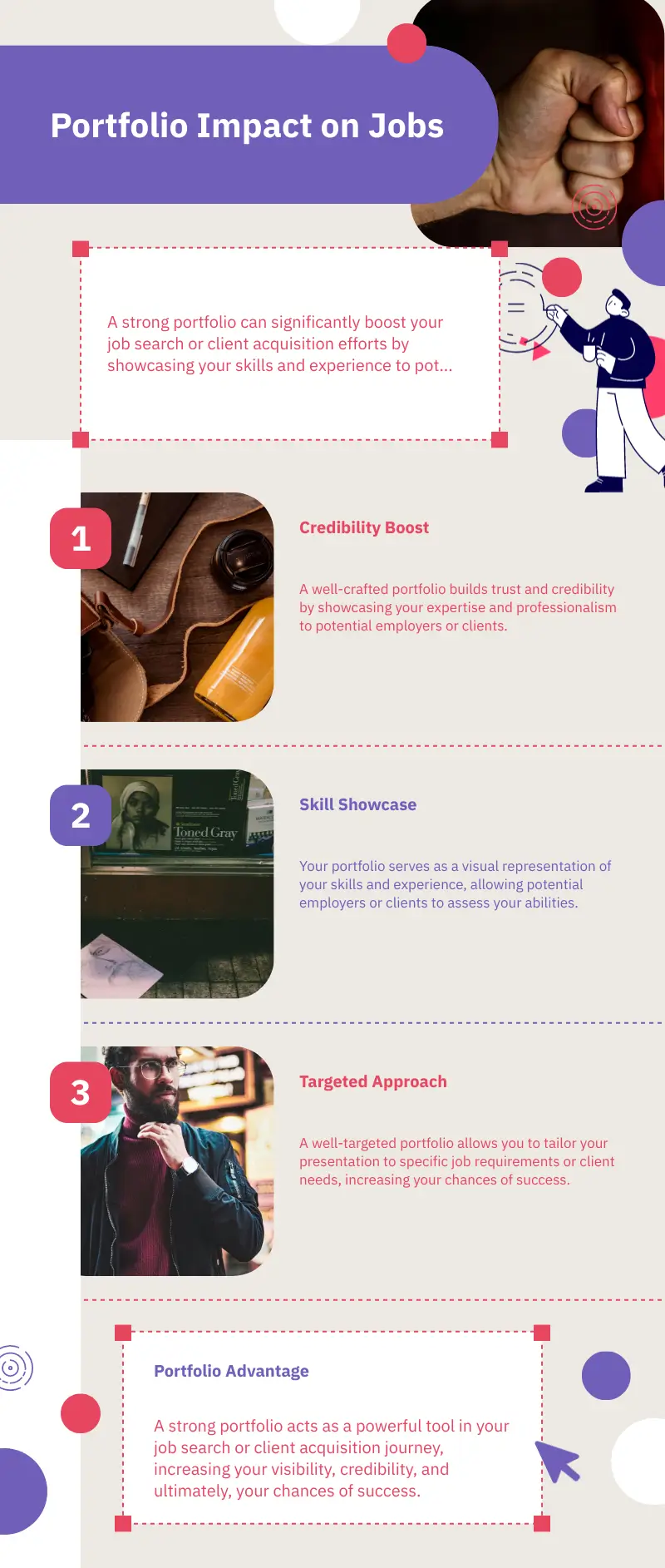
The Power of a Strong Portfolio
In today’s competitive job market, a resume alone often isn’t enough. Employers want to see proof of your skills, not just read about them. A portfolio provides that proof. It’s your chance to show, not tell. It’s a visual representation of your professional journey, your skills, and your potential.
Consider these facts:
- 86% of recruiters use social media to check candidates’ portfolios
- Portfolios with case studies are 60% more likely to result in an interview
- 65% of people are visual learners, making portfolios more impactful than resumes
Your portfolio is more than just a collection of your work. It’s a marketing tool, a branding exercise, and a chance to tell your unique story. It’s your secret weapon in the job hunt.
However, not all portfolios are created equal. A weak portfolio can hurt your chances. That’s why we’re here to share the secrets that will make your portfolio irresistible to employers.
Are you ready to unlock the potential of your work and land those dream jobs?
Key Takeaways
- Understand your target audience to tailor your portfolio effectively
- Quality trumps quantity – showcase your best work
- Tell your professional story to connect with potential employers
- Keep your portfolio design clean and user-friendly
- Highlight your process to demonstrate problem-solving skills
- Make it easy for employers to contact you
- Regularly update your portfolio with fresh content
- Ensure your portfolio is mobile-friendly
- Use client testimonials to build credibility
- Customize your portfolio for specific job applications
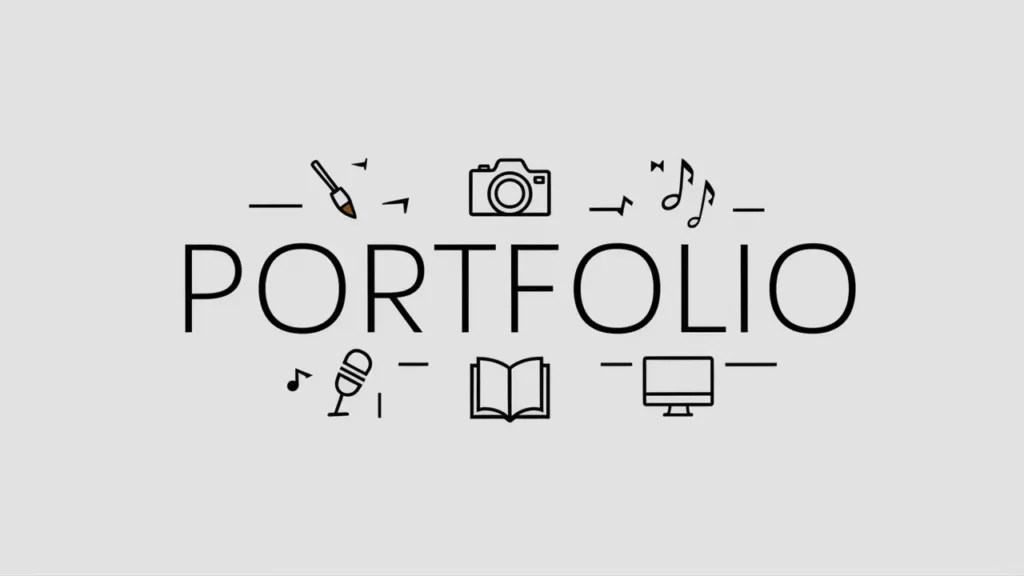
Secret 1: Know Your Target Audience – The Key to Portfolio Success
Imagine you’re a chef preparing a meal. Would you cook the same dish for a vegan food critic and a meat-loving bodybuilder? Of course not! The same principle applies to your portfolio. To create a portfolio that lands dream jobs, you need to know who you’re cooking for.
Why Understanding Your Audience Matters
Think about it: different employers look for different things. A startup might value innovation and versatility, while a large corporation might prioritize consistency and teamwork. By tailoring your portfolio to your target audience, you’re not just showing your work – you’re showing that you understand their needs.
Here’s how to get to know your target audience:
- Research Your Dream Companies
- Visit their websites and social media profiles
- Read their mission statements and recent press releases
- Look up their current employees on LinkedIn to see what skills they value
- Understand What Employers in Your Field Look For
- Follow industry leaders on social media
- Attend job fairs and ask recruiters what they look for in portfolios
- Analyze job postings for common requirements and desired skills
- Tailor Your Portfolio to Match Their Needs
- Highlight projects that align with the company’s values
- Use language that mirrors the company’s communication style
- Showcase skills that are most relevant to the positions you’re targeting
Case Study: The Power of Tailoring
Meet Sarah, a graphic designer who dreamed of working for an eco-friendly startup. Instead of using her standard portfolio, Sarah created a special version that:
- Highlighted her sustainable design projects
- Used a nature-inspired color scheme
- Included a case study on reducing paper waste in design
The result? Sarah landed an interview within a week and got the job soon after. The hiring manager later told her that her tailored portfolio showed she truly understood their mission.
Quick Tips for Audience Research:
- Use Google Alerts to stay updated on your target companies
- Join professional groups on LinkedIn to understand industry trends
- Create personas for your ideal employers to guide your portfolio design
Remember, a one-size-fits-all approach rarely fits anyone perfectly. By taking the time to understand your audience, you’re not just creating a portfolio – you’re creating a bridge between your skills and their needs.
Are you ready to make your portfolio speak directly to your dream employers?

Secret 2: Showcase Your Best Work – Quality Trumps Quantity
Picture this: You walk into an ice cream shop. Would you rather see 50 flavors that look just okay, or 10 flavors that make your mouth water? When it comes to portfolios, less is often more. It’s not about how much work you can show, but how well you can show your best work.
The Power of Curating Your Work
Think of yourself as the curator of your own personal museum. Each piece you include should tell a part of your professional story and highlight a key skill. Here’s how to make sure every item in your portfolio packs a punch:
- Choose Your Best Projects
- Pick work that you’re proud of and excited to discuss
- Select projects that showcase a range of skills
- Include pieces that align with your career goals
- Organize Your Work Effectively
- Group similar projects together
- Put your strongest work at the beginning and end (people remember these best)
- Use a clear, logical navigation system
How to Choose Your Best Work
Selecting your best work can be tough. Here’s a simple scoring system to help:
How to Choose Your Best Work
Rate your projects from 1-5 in each category. The highest scoring projects are your portfolio gold!
| Project Name | Relevance to Target Job | Showcases Unique Skills | Positive Feedback | Personal Pride | Problem-Solving | Total Score |
|---|---|---|---|---|---|---|
| 0 |
Case Study: The Portfolio Makeover
Meet Tom, a web developer who had 30 projects in his portfolio but wasn’t getting interviews. He decided to revamp his approach:
- He cut his portfolio down to his top 8 projects
- Each project now included a detailed case study
- He organized projects by skill (front-end, back-end, full-stack)
The result? Tom’s interview requests tripled in just one month. Employers could quickly see his best work without getting overwhelmed.
Quick Tips for Showcasing Your Best Work:
- Update your portfolio regularly, removing outdated work
- Include a mix of client work and personal projects
- Don’t be afraid to show works-in-progress if they demonstrate valuable skills
Remember, your portfolio is not a dumping ground for everything you’ve ever done. It’s a highlight reel of your professional journey. By carefully selecting and presenting your best work, you’re making it easy for employers to see your value.
Ready to make your portfolio a testament to your skills and potential? Great! Let’s move on
Secret 3: Tell Your Story – Bring Your Portfolio to Life
Imagine flipping through a photo album with no captions. Sure, the pictures might be nice, but you’re missing the context, the emotions, the story behind each image. Your portfolio is more than just a collection of work samples – it’s the story of your professional journey.
Why Storytelling Matters in Your Portfolio
People connect with stories. By weaving a narrative through your portfolio, you’re not just showing what you can do – you’re showing who you are. This personal touch can be the difference between being just another applicant and being the candidate they can’t wait to meet.
Here’s how to tell your story effectively:
- Craft a Compelling Personal Brand
- Define your unique value proposition
- Choose a consistent style and tone for your portfolio
- Use colors, fonts, and imagery that reflect your personality
- Write an Engaging “About Me” Section
- Start with a hook that grabs attention
- Share your professional journey and key achievements
- Include personal interests that make you memorable
- Connect Your Experiences to Your Work
- Explain the context behind each project
- Describe challenges you faced and how you overcame them
- Highlight the impact of your work on clients or employers
The Power of a Good Story
Let’s look at two ways to present the same project:
- Boring Version: “Designed logo for the local coffee shop.”
- Story Version: “Collaborated with a family-owned coffee shop to create a logo that captured their 50-year history and community focus. The new design increased brand recognition by 40% and was featured in a local art exhibition.”
Which version makes you want to learn more?
Case Study: The Storyteller’s Success
Meet Emma, a UX designer who was struggling to stand out in a crowded job market. She decided to revamp her portfolio with a storytelling approach:
- She wrote a compelling origin story about how she discovered her passion for UX
- Each project included a “behind the scenes” section detailing her process
- She added testimonials from clients and colleagues to support her narrative
The result? Emma landed her dream job at a top tech company. The hiring manager said her portfolio felt like “getting to know a friend” rather than reviewing a candidate.
Quick Tips for Telling Your Story:
- Use a conversational tone to make your portfolio more engaging
- Include personal anecdotes that relate to your professional growth
- Create a timeline of your career milestones
Remember, your portfolio is not just a showcase of your work – it’s a window into your professional world. By telling your story, you’re inviting potential employers to see the person behind the projects.
Are you ready to transform your portfolio from a simple collection of work into a compelling narrative of your career? Great! Let’s move on to the next secret that will make your portfolio a breeze to navigate.
Secret 4: Keep It Simple and Clean – Design Matters
Imagine walking into a messy room versus a tidy one. Which one makes you want to stay and look around? The same principle applies to your portfolio. A clean, simple design isn’t just pleasing to the eye – it helps your work shine and keeps viewers engaged.
Why Simple Design Is Crucial
In today’s fast-paced world, you often have just seconds to make a first impression. A cluttered, confusing portfolio can turn potential employers away before they even see your work. On the other hand, a clean, well-organized portfolio invites exploration and showcases your professionalism.
Let’s break down how to achieve this:
- The Importance of Good Design
- Use whitespace (empty areas) to give your content room to breathe
- Choose a color scheme that complements your work, not competes with it
- Stick to 2-3 fonts max for a cohesive look
- Tips for Creating a User-Friendly Layout
- Use a clear navigation menu that’s easy to find and use
- Group similar projects together
- Include a search function for larger portfolios
- Balancing Style with Function
- Make sure your design choices enhance, not hinder, the viewing of your work
- Test your portfolio on different devices to ensure it looks good everywhere
- Ask for feedback from peers or mentors on the usability of your portfolio
The Impact of Good Design: A Tale of Two Portfolios
Let’s compare two fictional portfolios:
- Cluttered Carl: Filled his homepage with flashing animations, used 5 different fonts, and crammed every project he’d ever done onto one page.
- Streamlined Sarah: Used a clean grid layout, stuck to a simple color scheme, and organized her best projects into clear categories.
Who do you think got more positive responses from potential employers?
Quick Design Tips:
- Use plenty of white space
- Stick to a consistent color scheme (3-5 colors max)
- Make sure the text is easily readable (dark text on a light background or vice versa)
- Use high-quality images that load quickly
Case Study: The Power of Simplicity
Meet Alex, a logo designer whose portfolio was full of flashy effects and complex layouts. Despite his strong work, he wasn’t getting the responses he hoped for. He decided to simplify:
- He stripped back his design to a clean, minimalist style
- He focused on showcasing one project per page with clear, concise descriptions
- He made sure his portfolio was easy to navigate on both desktop and mobile
The result? Alex’s portfolio views increased by 200%, and he started receiving inquiries from companies he’d always dreamed of working for. One recruiter even commented, “Your portfolio design alone told me you’d be a great fit for our team.”
Remember, your portfolio design should be like a picture frame – it should enhance your work without drawing attention away from it. By keeping things simple and clean, you’re making it easy for potential employers to focus on what really matters: your amazing work.
Ready to give your portfolio a simple makeover? Great! Let’s move on to the next secret that will show employers not just what you’ve done, but how you think.
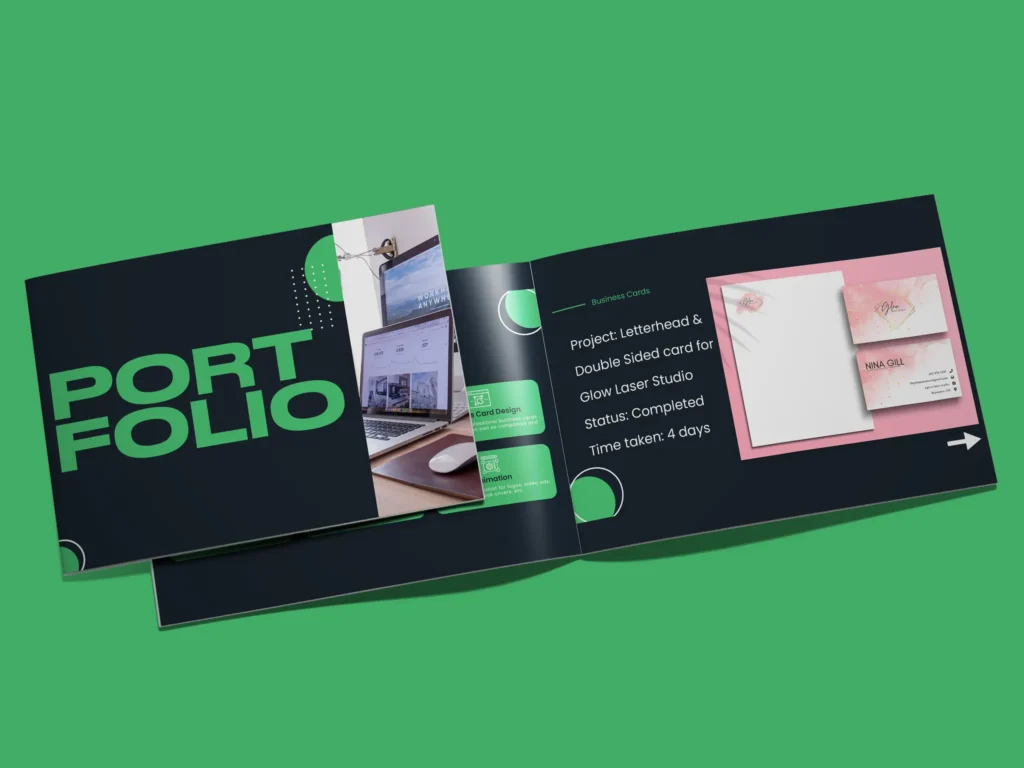
Secret 5: Highlight Your Process – Show How You Think
Ever wondered what goes on behind the scenes of a magic show? That’s often the most interesting part! The same goes for your work. Showing your process gives employers insight into how you think and solve problems.
Why Process Matters
Employers aren’t just interested in your finished products – they want to know how you got there. By showcasing your process, you’re demonstrating:
- Your problem-solving skills
- Your ability to iterate and improve
- Your thought process and decision-making abilities
Here’s how to effectively highlight your process:
- Show Your Problem-Solving Skills
- Clearly state the problem or challenge for each project
- Explain your approach to solving it
- Discuss any obstacles you faced and how you overcame them
- Include Sketches, Drafts, and Iterations
- Show early concepts and how they evolved
- Include prototypes or wireframes
- Demonstrate how feedback shaped your work
- Explain Your Thought Process
- Discuss why you made certain design or technical decisions
- Share insights you gained during the project
- Reflect on what you’d do differently next time
Quick Tip: Create a simple flowchart or timeline to visually represent your process.
Secret 6: Make It Easy to Contact You – Don’t Let Opportunities Slip Away
Imagine a store with amazing products but no way to make a purchase. Don’t let your portfolio be that store! Make it easy for potential employers to reach out.
Why Accessibility Matters
The easier you make it for employers to contact you, the more likely they are to do so. Here’s how to ensure you don’t miss any opportunities:
- Create a Clear Call-to-Action
- Use phrases like “Let’s work together” or “Get in touch”
- Make your contact button stand out with contrasting colors
- Include Multiple Contact Methods
- Email address
- Phone number (if you’re comfortable sharing it)
- Links to professional social media profiles
- Use a Professional Email Address
- Stick to a simple format
- Avoid quirky or unprofessional email addresses
Pro Tip: Consider adding a contact form directly on your portfolio site for easy access.
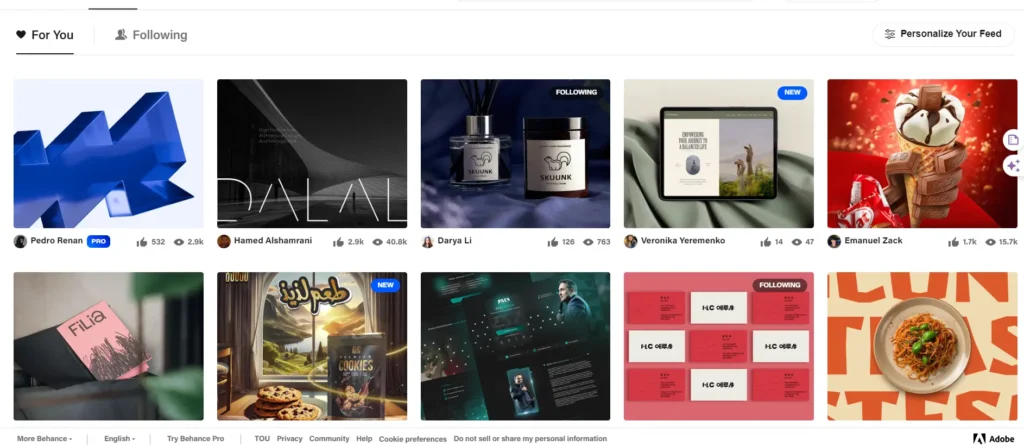
Secret 7: Update Regularly – Keep Your Portfolio Fresh
Your portfolio is a living document of your professional growth. Keeping it updated shows employers you’re actively developing your skills.
Why Regular Updates Matter
An outdated portfolio can give the impression that you’ve stagnated in your career. Here’s how to keep things fresh:
- Keep Your Portfolio Current
- Add new projects as you complete them
- Update older projects with new insights or results
- Set a Schedule for Updates
- Review your portfolio monthly
- Set reminders to add new work or remove outdated pieces
- Remove Outdated Work
- Keep only your best and most relevant projects
- Replace older work with newer pieces that show your growth
Quick Tip: Add a “Last Updated” date to your portfolio to show it’s current.
Secret 8: Optimize for Mobile – Don’t Lose Mobile Viewers
In today’s mobile-first world, your portfolio needs to look great on all devices.
Why Mobile Optimization Matters
Many employers might first view your portfolio on their phones. If it doesn’t work well on mobile, you could lose their interest before they even see your work.
Here’s how to ensure your portfolio shines on all screens:
- Why Mobile-Friendly Portfolios Matter
- Over 50% of web traffic is mobile
- Google prioritizes mobile-friendly sites in search results
- Tips for Responsive Design
- Use a mobile-responsive theme or template
- Ensure text is readable without zooming
- Make buttons and links easy to tap on mobile
- Testing Your Portfolio on Different Devices
- Use browser developer tools to simulate different screen sizes
- Test on actual mobile devices when possible
- Ask friends or colleagues to check your site on their devices
Pro Tip: Use Google’s Mobile-Friendly Test tool to check your site’s mobile performance.
Secret 9: Use Client Testimonials – Let Others Sing Your Praises
There’s nothing quite as powerful as a third-party endorsement. Client testimonials add credibility and show you’re great to work with.
Why Testimonials Matter
Testimonials provide social proof of your skills and work ethic. Here’s how to use them effectively:
- The Power of Social Proof
- People trust recommendations from others
- Testimonials validate your claims about your skills
- How to Ask for and Display Testimonials
- Reach out to satisfied clients or colleagues
- Ask specific questions to get detailed responses
- Display testimonials prominently on your portfolio
- Using Testimonials to Address Potential Concerns
- Choose testimonials that highlight your key strengths
- Include testimonials that speak to your reliability and professionalism
Quick Tip: Include the name, position, and company of the person giving the testimonial for added credibility.

Secret 10: Tailor for Each Application – One Size Doesn’t Fit All
Just as you tailor your resume for each job application, consider tailoring your portfolio too.
Why Tailoring Matters
Different jobs require different skills. By tailoring your portfolio, you’re showing employers exactly how you fit their needs.
Here’s how to tailor effectively:
- Creating Multiple Versions of Your Portfolio
- Have a master portfolio with all your work
- Create sub-portfolios focusing on specific skills or industries
- Customizing for Specific Job Applications
- Rearrange projects to highlight the most relevant work first
- Adjust project descriptions to emphasize skills mentioned in the job listing
- Highlighting Relevant Skills and Experiences
- Use keywords from the job description in your portfolio
- Create a custom landing page for important applications
Pro Tip: Keep track of different versions with clear file names or tags.
FAQs: Crafting a Strong Portfolio for Dream Jobs
Q1: How many projects should I include in my portfolio?
A1: Aim for 5-10 high-quality projects that best showcase your skills and align with your target jobs. Quality is more important than quantity.
Q2: What should I include in my portfolio besides work samples?
A2: Include an “About Me” section, your skills, professional experience, education, client testimonials, and a clear way to contact you.
Q3: How often should I update my portfolio?
A3: Review your portfolio monthly and update it whenever you complete a significant project or gain new skills, ideally at least every 3-6 months.
Q4: Should I have different versions of my portfolio for different job applications?
A4: Yes, it’s beneficial to tailor your portfolio for specific job applications by highlighting relevant projects and skills that match the job requirements.
Q5: How do I make my portfolio stand out from others?
A5: Focus on telling your unique story, showcase your process, include case studies, and ensure your design is clean and professional. Highlight what makes you unique in your field.
Q6: Is it necessary to have a website for my portfolio, or is a PDF enough?
A6: While a PDF can work, an online portfolio website is often preferred as it’s more accessible, easier to update, and can showcase interactive elements of your work.
Q7: Should I include personal projects in my professional portfolio?
A7: Yes, personal projects can demonstrate passion, initiative, and skills that might not be evident in your professional work. Include them if they’re relevant to your career goals.
Q8: How do I showcase my skills if I’m just starting out and don’t have much professional work?
A8: Focus on academic projects, internships, volunteer work, and personal projects. Create hypothetical projects to demonstrate your skills if necessary.
Q9: What’s the best way to organize projects in my portfolio?
A9: Organize projects by category (e.g., web design, branding) or by skills demonstrated. Place your strongest and most relevant work first.
Q10: How important is the design of my portfolio if I’m not a designer?
A10: Even if you’re not a designer, a clean, professional-looking portfolio is crucial. It demonstrates attention to detail and professionalism. Use simple, user-friendly templates if design isn’t your strength.
Q11: Should I include prices or rates in my portfolio?
A11: Generally, it’s best to leave pricing discussions for direct communications with potential clients or employers. Your portfolio should focus on showcasing your skills and value.
Q12: How do I get client testimonials for my portfolio if I’m new to the field?
A12: Start with feedback from professors, internship supervisors, or clients from volunteer work. As you complete projects, even small ones, always ask for testimonials.
Conclusion: Your Portfolio, Your Career Catalyst
Crafting a strong portfolio isn’t just about showcasing your work – it’s about telling your professional story in a way that resonates with your dream employers. By following these 10 secrets to build a strong portfolio, you’re not just creating a portfolio; you’re creating a powerful tool that can open doors to amazing opportunities.
Remember:
- Know your audience
- Showcase your best work
- Tell your story
- Keep it simple and clean
- Highlight your process
- Make it easy to contact you
- Update regularly
- Optimize for mobile
- Use client testimonials
- Tailor for each application
Your portfolio is more than just a collection of your work – it’s a reflection of you as a professional. It’s your chance to show the world what you can do and why you’re the perfect fit for your dream job.
So, what are you waiting for? It’s time to put these secrets into action and create a portfolio that not only lands interviews but lands your dream job. Your next big opportunity is just a great portfolio away!
Portfolio Strength Checker
Check which of the 10 secrets your portfolio includes:
We'd love to hear your portfolio success stories! Have you used any of these secrets in your own portfolio? Share your experiences in the comments below and let's learn from each other.
Additional Resources
- Ahrefs: A comprehensive tool for keyword research and competitor analysis.
- SEMrush: An all-in-one marketing toolkit for digital marketing professionals.
- Behance: A platform to showcase and discover creative work.
- DesignCrowd: A marketplace for freelance designers.
- 99designs: A platform connecting designers with clients in need of design services.
- Monkey Digital: An all-in-one place for SEO optimization.
- Hostinger: Provide fast and secure web hosting services.




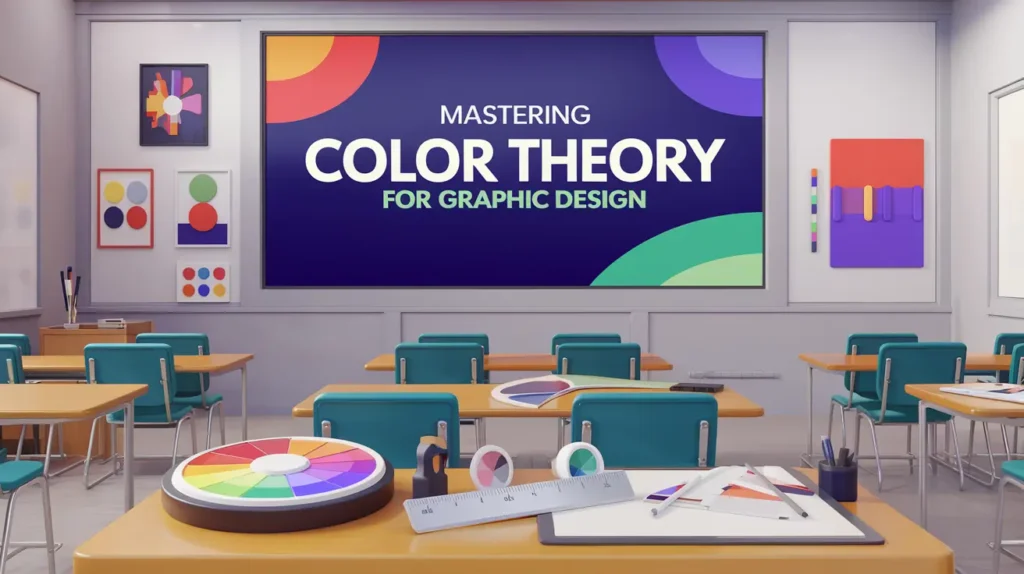
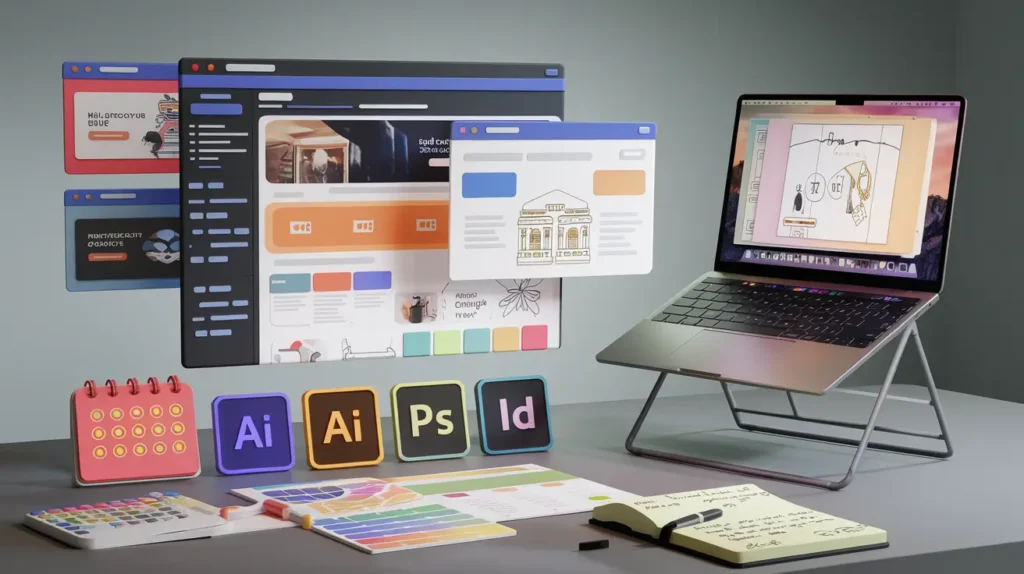
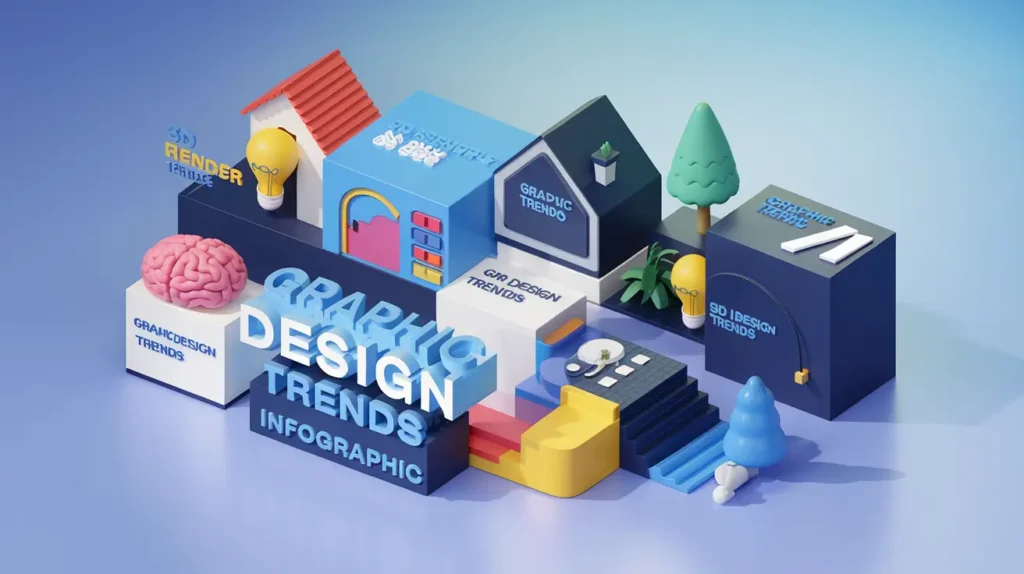

4 Responses
My brother recommended I might like this web site. He was totally right. This post actually made my day. You cann’t imagine just how much time I had spent for this information! Thanks!
Thank you for your positive feedback.